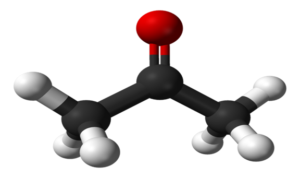The inner transition metals consist of two series of elements, i.e., actinoids and lanthanoids. There are various uses of inner transition metals in different industries. For instance, determining the age of fossils and making nuclear weapons. There are 14 elements in the actinoids series. Some of them include thorium, uranium, curium, nobelium, and fermium.
The lanthanide series contains 14 elements, as well. Here are some of the examples; cerium, neodymium, promethium, thulium, and lutetium. In most cases, you will find them shown below other elements in the periodic table. However, they generally belong to the sixth and seventh period. Lathanoid elements start from the atomic number 58-71. These are elements starting from cerium up to lutetium. Contrary, the actinoid series consists of the metals that belong in between atomic number 90 to 103 — I.E., from thorium up to lawrencium.
The incredible thing about these metals is that they were among the last to be discovered in the periodic table. Besides, many of these metals do not exist naturally but are synthesized through nuclear reactions. They appear similar in terms of chemical reactions. Most lanthanoids are used to make sunglasses, strong magnets, and producing lasers.
Amazing uses of inner transition metals
1. Making nuclear weapons
Most inner transition metals, such as Uranium, contain unique nuclear properties. Also, other inner transition metals such as plutonium can be used to make explosives. However, Uranium is widely used because of its favorable properties and availability over the others. It contains 92 electrons, 92 protons, and six valence electrons. All the isotopes of Uranium are unstable, and that explains why it’s highly reactive. Uranium’s isotopes occur naturally, and they contain half-lives of 159, 200, and 4.5 billion years. Its unique nuclear properties make it suitable for atomic weapons and nuclear power plants.
2. Nuclear power
Most inner transition metals are used to generate nuclear power. For example, nuclear power plants collide uranium atoms with neutrons. It helps in releasing uranium neutrons, which are hit with other particles later, forming a chain reaction. Control rods manage the chain reaction while absorbing neutrons. The fission of uranium atoms inside the nuclear reactors releases energy. Then water is heat by the same power up to 520° Fahrenheit. The hot water finally spins turbines to produce electricity.
3. Producing lasers
Some Lanthanoids are used to make lasers. They are formed when radiation is amplified by light. A laser converts optical or electrical energy into light. This energy is used to excite the molecules or atoms hence emitting monochromatic light. Lasers consist of spherical or plane at the end containing laser material. Ordinary visible light is not coherent because it comprises of multiple wavelengths. Contrary, laser light contains only one wavelength hence making it different than the regular lights.
4.Dating rocks, minerals, and fossils.
Samarium and lutetium have long half-lives, which makes them suitable to date rocks and minerals. These two metals have radioactive isotopes i.e., 147 Sm and 176 Lu. They are typically used to date rocks and minerals from the moon, meteorites, and the earth. Radioactive dating uses unstable elements that are always moving to form radioactive decay. Scientists and archaeologists use the inner transition metals to determine the age of fossils and other materials such as rocks.
5. Producing strong magnets
Lanthanoids such as samarium, neodymium, and cerium can be used to make strong magnets when alloyed with other metals. Durable permanent alloy is created by the inner transitional metals by combining various metals with magnetic properties. Examples of such metals include; nickel, Iron, and cobalt, which contain major magnetic elements. Any alloy for making strong magnets must contain one of these alloys. One of the best alloy metal is Iron because it makes the material very attractive to the attraction.
6. Making sunglass lenses
Sunglasses are essential to the eye’s health because they prevent intense rays from reaching our eyes. Harsh rays can damage our eyes due to radiation in the nonvisible and visible spectra. However, with the help of some inner transition metals, durable sunglasses are made. Although most of these sunglasses are plastics, the inner transition metals are used during the metallic oxidation stage. They are responsible for absorbing and reflecting away light, which surpasses specific frequencies. Also, some sunglass frames are made from alloys made from mixing thee inner transition metals with other metals.
7. Coating tungsten wiring
One of the most profitable uses of the inner transition metals is coating in electronic equipment. Thorium element is useful for tungsten wiring coating. Thorium fluoride is the most preferred material because of its low index and transparency from the U.V. Also, it has chemically stable and durable. Because it is a naturally radioactive material, it must be treated with a lot of care and disposed of accordingly. It is prepared chemically following controlled steps and later melted under an inert atmosphere.
8. Research
Most inner transition metals do not exist naturally. They are produced in the labs or nuclear reactors for research purposes by scientists. Also, the inner transitional metals were recently added to the periodic table for educational purposes. They also contain some properties which are very rare to find in other metals. Government organizations are also trying to maximize the potential of this element. Research institutes and nuclear reactors that produce the sell to other companies as raw materials.
9. Ammunition and armor
A wide variety of inner transition metals are super reactive. They are used to make armor and ammunition such as bullets, grenades, and missiles. Others are used to make bulletproof fiber vests and military shoes. Some of the most dangerous weapons in the world, including that atomic bombs, are made using such elements. The nuclear bomb that was dropped on Hiroshima and Nagasaki was created by a highly reactive part known as plutonium. These elements are hazardous; hence, governments are strict on their production and usage.
10. Medical purposes
Apart from powering nuclear power plants, these metals are also used for medicinal purposes. For instance, Uranium is used to protect from radiation as a shield. Other elements are inserted into the body to act as tracers. Lastly, they also serve therapeutic purposes, such as destroying targeted cells in our bodies.





thats cool how the nuclear power plants are also made to produce medicine plants
I think that this article is interesting because it shows all the different and unique ways metal can be used.
Most inner transition metals do not exist naturally
transition metals are super reactive they are used to make armor and ammunition such as bullets, grenades, and missiles.
good
I liked this because it showed me some interesting ways that metal can be used.